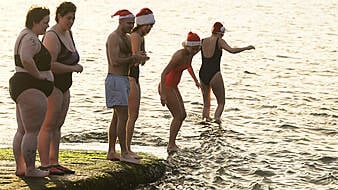A gender gap in physical activity levels between men and women in the Republic and Northern Ireland has highlighted "the need to address barriers to physical activity for women and other population groups".
That’s according to a new report, ‘Mind the Gap – Exploring knowledge about physical activity in Ireland and Northern Ireland’, published by the Institute of Public Health (IPH).
The new report found that despite a high level of awareness about the benefits of physical activity and recommended guidelines, women were less active than men.
The findings are based on surveys exploring how knowledgeable the adult population (18+ years) in the Republic and the North is about physical activity, and specifically, its benefits, current guidelines and sources of information.
The surveys were carried out by LucidTalk in 2021, with 1,279 respondents in the Republic and 2,223 respondents in Northern Ireland.

Almost half of respondents in the Republic (46 per cent) and a third in Northern Ireland (33 per cent) knew the weekly recommendations to do at least 150 minutes of physical activity, although only around three in 10 across both jurisdictions were physically active five days a week or more.
While the report found that between seven and nine out of 10 people in both jurisdictions were aware of the benefits of physical activity, it identified differences in self-reported activity levels between men and women.
It found that women were less likely to be active and more likely to be inactive than men in both jurisdictions – this was despite high awareness of the benefits of physical activity amongst women.
In Northern Ireland, women were more knowledgeable than men about weekly recommendations for physical activity (37 per cent women v 30 per cent men) but were less active (31 per cent men active for 5+ days; 26 per cent women active for 5+ days).
South of the Border, men were marginally more knowledgeable about weekly recommendations for physical activity (48 per cent v 45 per cent) compared to women and were more active than women (39 per cent men active for 5+ days; 31 per cent women active for 5+ days), the report found.
Barriers
The findings suggest that knowledge is important but, alone, it may not be enough to support women to take part in activity, so other barriers, such as time, safety, and access to suitable facilities and activities must be understood and addressed.
The 2021 survey also found that across both jurisdictions, close to one in six surveyed were physically inactive and had not undertaken any physical activity at all in the previous week.
Inactivity was higher among women and older people across both jurisdictions, as measured by the number of days people were inactive.
While there was strong awareness in both jurisdictions that inactivity increases the risk of certain conditions, such as heart disease, stroke and depression, fewer knew about the association between inactivity and certain cancers and falls.
An information gap between older and younger age groups was also identified. For example, one third of older people in the North (33 per cent) and almost half in the Republic (48 per cent) were aware of the link between physical inactivity and certain cancers, whereas three quarters of younger people were aware of this.
A social gradient regarding physical activity was also evident – the survey found that people from a lower socio-economic group or with a lower level of education were more likely to be inactive and were less knowledgeable about the benefits of physical activity and the risks of inactivity.
The survey also looked at how people sourced information, finding that media, including newspapers, TV, radio and websites, were the most common sources of information about the health benefits of physical activity, although social media and the workplace were also important for younger people.







